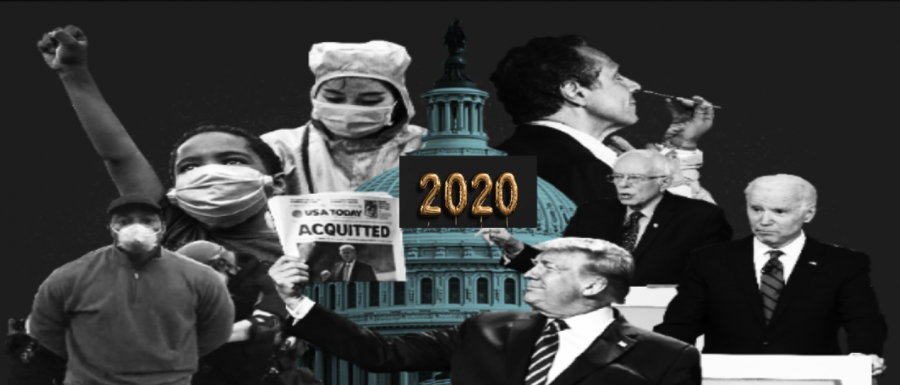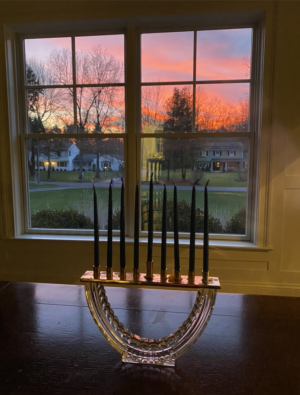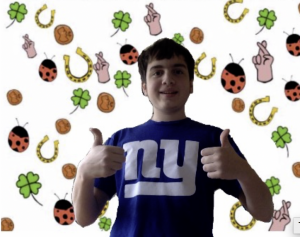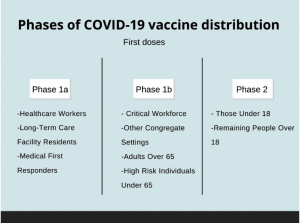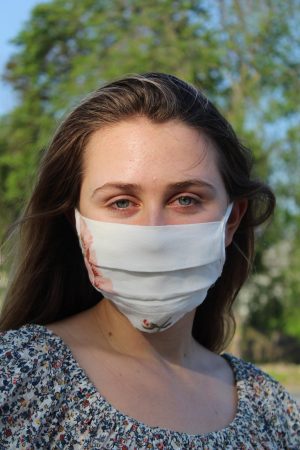2020 commences decade with nothing short of commotion
2020 seemed to be a never ending year, with more monstrosity everyday. While it was the year that nobody anticipated, it was the year that everyone needed.
If F. Scott Fitzgerald’s “The Great Gatsby” suggested that the roaring ‘20s were filled with nothing short of excitement, dancing and extravagance, we should have been in for an even greater year with 2020. Instead, it was largely a year of monstrosity, chaos and grief.
But even though 2020 was the year that nobody anticipated, it was, oddly enough, the year that almost everyone needed.
2020 began with increasing buzz from the media as the novel Coronavirus began to emerge and make its way into the United States.
Some students believed that we would soon enter a never-ending lockdown, while others believed the virus was equivalent to a common case of the flu. Yet, at the time, kids agreed that it was a great topic to touch on in class to distract their teachers from actually teaching.
With nothing but exhilaration for the unknown adventure coming their way, Staples students left the building on Wednesday, March 11, ready for what they had believed to be a mere two-week spring break.
President Donald Trump closed America’s borders to protect against COVID-19 that night, declaring a national state of emergency two days subsequent. Almost everyone was now indefinitely in quarantine, and there was no clear end in sight.
The new norm consisted of soaring hours on TikTok, online workouts, banana bread, Zoom university and drive-by birthday parties. Masks became fashionable and even walking in one’s neighborhood became trendy, but the following months would also prove to be extremely difficult for everyone.
As I reflect on my days spent locked in my room, I can’t help but feel tremendous empathy for us all, as everyone was struggling in their own ways. Although I have very little desire to return to my time in quarantine, I feel as though it was crucial to put life into perspective by taking a break from the extremely fast-paced lifestyle that we had become accustomed to.
I was forced to spend time with my immediate family exclusively within the confines of our own house, and I was unable to jam pack my days with an assortment of activities and distractions. Although difficult, it taught me how to spend time with myself, and be creative when coming up with pastimes.
No longer were my concerns about if I had enough time to finish my homework before going to dance and then seeing my friends. Instead, my family was able to rekindle the lost art of having long conversations. Whether the conversations were intellectual, or simple, they allowed for us to have time to embrace and learn about each other, an important aspect of life that we were never able to do prior.
The pandemic not only gave us time to reflect, but also encouraged social and political activism.
On May 25, a black man from Minneapolis named Geroge Floyd was apprehended by police due to allegedly using a counterfeit bill. He was held in the road as Officer Derek Chauvin knelt on his neck for eight minutes and 46 seconds, with Floyd’s last words being, “I can’t breathe.” Shortly after, he lost his life as a result of police brutality.
Floyd’s death sparked outrage in millions of people around the country and the world, creating an abundance of Black Lives Matter protests in every state in America, including one in Westport, Connecticut. People were angry and upset, no longer able to idly watch the constant systemic cruelty that black people and other non-white individuals had to endure daily. Matters were taken into the hands of the American people, and the fight for Floyd’s justice began as the centuries-old fight for civil rights continued.
A variety of social media platforms like Instagram and Twitter created a community to spread awareness about various issues, express one’s political beliefs and gather others around a common cause as a way to make change. It was almost impossible for someone to be unaware of their followers’ stance on a movement or particular issue. The politicization of Instagram occurred as a result of the pandemic, as a way for people to get their word out when they felt like they couldn’t leave their houses. Although, I believe that it will continue to be a political environment going forward.
Although the video of Floyd’s death would be dramatic and upsetting at any time, the fact that it occurred during quarantine, I believe, played a key role in the intensity and scope of the global response. People were undistracted and restless, and there was little else to compete in terms of news coverage, next to the pandemic, and President Trump. Additionally, the lack of structured school and other activities paved the way for young people to be more involved in the protests that erupted.
The multiple deaths that led up to this worldwide demonstration were appalling, yet allowed many Americans to rethink their values and realize what needed to be done on a fundamental level. This sudden pause in time was essential for people to open their eyes and realize the more crucial things in life. It was time to get working, because this issue has no end in sight, and any movement to bring about systemic change is the step in the right direction.
Although the first half of the year was packed to the brim with insanity, the madness was still not nearly over.
On Sept. 18, United States Supreme Court Justice Ruth Bader Ginsburg died of cancer. Her death left many Americans feeling dejected and fearful after losing such an influential female role model. Ginsburg’s passing, on the eve of the Jewish new year, Rosh Hashanah, marked a tragedy in American history, but she left behind a trailblazing legacy to be followed by other women.
As the turbulent year went on, we entered the 2020 presidential election on Nov. 3 with angst. The election was anticipated to be a very close one, and tensions ran high, with debates on Facebook and Twitter continuing in an uproar. After five long and stressful days of counting and recounting ballots, Joe Biden was announced the 2020 president-elect on Nov. 7, with a historically high voter turnout, surpassing any election that the United States has ever seen.
This election elicited hope in many at the end of such a high-strung year. While many Republicans demanded recounts in several states, many who had turned out to vote against President Trump gathered in the streets to sing, dance and celebrate the end of his one-term presidency.
Ultimately, we ended this year with some of the best news of 2020: COVID-19 vaccines. Pfizer’s COVID-19 vaccine was approved for emergency use in America on Dec. 11. This vaccine, found to be 95% effective, has been released only to the most vulnerable to the virus, as well as frontline healthcare workers. However, as more doses continue to be manufactured, it will be distributed to the rest of the population.
Moderna has developed a vaccine as well, hopefully to be approved any day now, with others likely to follow. This information provides a shard of hope for all, and light at the end of the tunnel. It allows for everyone to hold onto the hope that a sense of normalcy may return in the foreseeable future. It is important to everyone to put an end to this deadly pandemic.
No matter how difficult 2020 was, this year was a crucial one. It presented a learning curve for all of us to take a break, rethink our values, learn to never take life for granted, get our voices heard and, most importantly, learn how to make an immense amount of banana bread. We can only hope that 2021 has a more positive outcome.
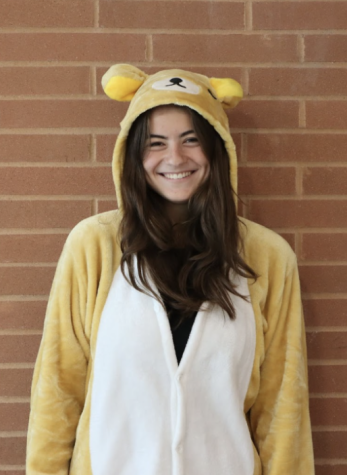
Assistant Business Director Julia Leitner ’23 has a busy schedule balancing school and her extracurriculars, but Leitner enjoys juggling all of her daily...












































